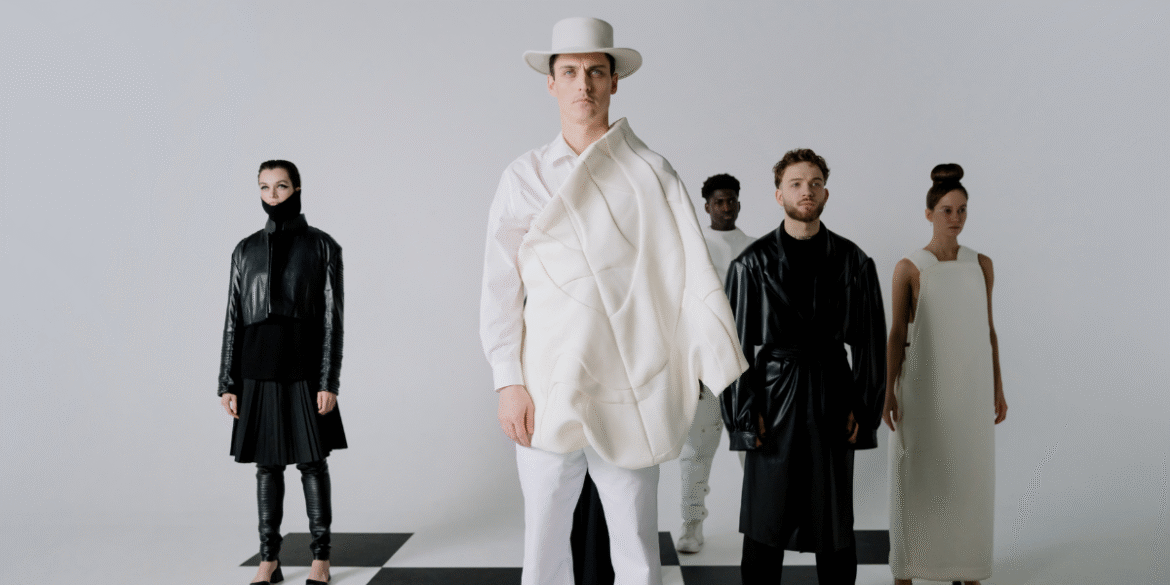Over the past few years, the fashion industry has seen a dramatic shift in how men’s fashion is marketed and consumed. What was once considered a niche market is now a cultural force, with collaborations between high-end luxury brands and streetwear labels reshaping the future of men’s fashion. This trend reached its peak in 2022, with high-profile partnerships such as Louis Vuitton and Supreme dominating headlines. These collaborations have not only redefined what luxury means but have also solidified men’s position as major influencers in the fashion world.
The Power of Streetwear Meets Luxury
In the past, men’s fashion was often seen as more conservative, with luxury brands targeting an older, more established demographic. However, the rise of streetwear has disrupted that narrative, with brands like Supreme, Off-White, and Bape offering a fresh, youthful perspective on fashion. What started as a subculture rooted in skate and hip-hop culture quickly evolved into a global phenomenon, attracting younger, fashion-conscious men looking for something beyond traditional luxury.
As a result, high-end brands like Louis Vuitton, Balenciaga, and Dior have increasingly sought out collaborations with streetwear giants, understanding the power of these partnerships to tap into an entirely new consumer base. These collaborations often combine the best of both worlds: the craftsmanship and prestige of luxury with the laid-back, rebellious edge of street culture.
The 2022 Milestone: Louis Vuitton x Supreme
One of the defining moments of the men’s fashion collaboration trend occurred in 2022, when Louis Vuitton partnered with Supreme to release an exclusive collection. This collaboration was not only highly anticipated but also a clear signal that luxury brands were recognizing the purchasing power and influence of the younger male demographic.
The Louis Vuitton x Supreme collection was a resounding success, with pieces selling out in a matter of hours. The mix of high-end tailoring and streetwear sensibilities—think Louis Vuitton monogram on Supreme’s signature red logo—created a buzz that reverberated throughout the fashion industry. This collection was the epitome of luxury’s embrace of street culture, proving that collaborations could bridge the gap between exclusivity and accessibility.
Attracting the Younger Male Consumer
What’s behind the appeal of these collaborations? For starters, they speak to a generation of men who are looking for more than just high-end products—they’re after experiences, exclusivity, and a sense of cultural relevance. The millennial and Gen Z consumer, in particular, has been at the forefront of this shift, with a growing appetite for limited-edition items that allow them to stand out while still embodying luxury.
Many of these collaborations offer a unique, almost collectible aspect. Limited-edition pieces, often released in small batches, create an air of exclusivity that drives demand. For younger men, fashion is no longer just about clothes; it’s about expressing individuality, status, and belonging to a larger cultural moment.
The rise of social media has further amplified this trend. Platforms like Instagram and TikTok have made it easier for men to engage with their favorite brands, influencers, and trends. As influencers and celebrities don pieces from these limited-edition collections, the desire for these products skyrockets. The digital landscape has also made it possible for collaborations to reach global audiences instantaneously, with demand often surpassing supply within hours of a product drop.
The Digital Influence and Social Media
Social media has played a pivotal role in fueling the rise of these collaborations. Platforms like Instagram and TikTok have made it easier for men to engage with their favorite brands, influencers, and trends. As influencers and celebrities don pieces from these limited-edition collections, the desire for these products skyrockets. The digital landscape has also made it possible for collaborations to reach global audiences instantaneously, with demand often surpassing supply within hours of a product drop.
Moreover, the younger male consumer is increasingly value-driven, looking for products that reflect not only their aesthetic preferences but also their cultural and social identities. This is where collaborations have gained traction—by aligning with youth culture and the values of individuality, self-expression, and exclusivity, these partnerships resonate on a deeper level with consumers.
The Future of Men’s Fashion: Beyond Collaborations
While the surge of high-end streetwear collaborations has made a significant impact, it’s not the only trend reshaping men’s fashion. Moving forward, collaborations are likely to become even more experimental, with more luxury brands embracing diversity in their design and creative processes. The trend also shows no signs of slowing down, as younger male consumers continue to drive demand for innovation and cultural relevance in fashion.
Brands are also expected to lean further into the digital realm, where virtual fashion and NFTs are emerging as new ways to engage with consumers. Collaborations that span both physical and digital spaces—such as exclusive drops tied to virtual goods or augmented reality experiences—are likely to further amplify the way men experience and interact with fashion.
Conclusion
The rise of collaborations between high-end brands and streetwear labels has transformed men’s fashion in a way that’s reshaping how brands connect with the modern male consumer. The trend that peaked in 2022 is not just a passing phase; it represents a cultural shift that acknowledges men as major players in the fashion industry. Moving forward, the lines between luxury, streetwear, and digital innovation will continue to blur, and brands that embrace these changes will be at the forefront of defining the next chapter in men’s fashion.
As the influence of collaborations grows, so too will the role of the male consumer, whose tastes, values, and cultural significance are now shaping the future of fashion.

